#introduction to media studies
Explore tagged Tumblr posts
Text
Week 1- Introduction to Media Studies
Hello my name is Parinaz Kapoor, I am a student at CP Goenka International School Oshiwara Mumbai.
In this blog, I'd like to talk about how enthralling and illuminating media is as a subject. I've always been very curious about what happens behind the exceptional scenes in a beautifully produced movie and media as a subject helps me understand the finer aspects of media. It brings out the creative side of me that excessively lives in me untouched. I'm so glad that I can bring out my inner creativity in this subject and embrace it.
Our class started with the introduction to media studies, the riveting forms of media like film, radios, podcasts, music, articles, etc. I can't wait to be introduced to more fascinating topics.
This year, we have a project on our foundation profile where my classmates and I would be divided into groups to create our own 2 minute opening of a film.




5 notes
·
View notes
Text
Fellow studyblrs I need help.
I haven't been able to gather any primary research or feedback on the first draft of my intro from anyone I know because no one will give any, please if you get a moment would you watch this and give some feedback? I have replaced everyone's real names with the first things that came to my mind.
No pressure at all!
#studyblr#college#study motivation#study aesthetic#media#studyspo#spilled ink#film#production#motivation#studyblrs unite#study blog#study with me#studyblr community#introduction#assistance#video#video editing#student#capcut#pinterest#most of the images are from pinterest#primary research#feedback#research#college project#work in progress#mockumentary#drafts#my stuff
4 notes
·
View notes
Text
There's a concept in theology that's really helpful for shutting down circular arguments that sound like "well the bible CLEARLY says..." back and forth ad nausea called the Wesleyan Quadrilateral. Stupid name for a very simple concept: it just means that there's generally four sources for how we do religion, namely scripture, tradition, reason and experience. While it's a pretty archaic concept, it holds up really well to modern scrutiny.
The reason I'm bringing this up (besides that I'm a huge nerd who loves talking about shit like this) is that this can also be a tool to help us navigate modern internet bullshit. I've seen so many awful takes completely devoid of nuance that can be boiled down to "believe victims" "that's my experience" "this is my trauma response." None of those are bad concepts, but without nuance they can lead to really useless circular conversations. Idk if you've seen the person experiencing delusions about being enslaved as a child by a famous musician (I don't want to bring too much more attention to them for their sake), but people were believing them based solely on "believe victims" as a hardline stance. I'm not saying we should throw out "believe victims" as a value, but we should be able to include some other basic values in-line when interpreting information. Scripture, tradition, reason and experience aren't ideal words or tools on their own right now, so something closer to: source material and a quick google search, culture/worldview, reason and personal experience? Idk, but if we're really incapable of escaping another generation of conspiracy, mob mentality and hysteria supercharged by engagement-based social media, we should at least figure out some tools for dealing with the bullshit.
#lmao#why did i write this like an introduction to a paper#maybe i should write a paper#ive been thinking that i could just write essays about what i'm interested in without spending a bunch of money taking a class#social media#theology#study
2 notes
·
View notes
Text
◟ ・ TAG DROP !
#◟ ・ about.#◟ ・ aesthetics.#◟ ・ anonymous.#◟ ・ answered.#◟ ・ appearance.#◟ ・ attire.#◟ ・ character study.#◟ ・ closed thread.#◟ ・ dialogue.#◟ ・ edits.#◟ ・ event.#◟ ・ featuring.#◟ ・ introduction.#◟ ・ interactions.#◟ ・ inspiration.#◟ ・ memes.#◟ ・ mindset.#◟ ・ open thread.#◟ ・ phone calls.#◟ ・ tasks.#◟ ・ text messages.#◟ ・ social media.
1 note
·
View note
Text
╰ › tag drop !
#╰ › about ﹕ 001.#╰ › aesthetics ﹕ 002.#╰ › anonymous ﹕ 003.#╰ › answered ﹕ 004.#╰ › character study ﹕005.#╰ › edit ﹕ 006.#╰ › ensemble ﹕ 007.#╰ › event﹕ 008.#╰ › feat﹕ 009.#╰ › headcanons﹕ 010.#╰ › home ﹕ 011.#╰ › interactions﹕ 012.#╰ › introduction﹕ 013.#╰ › inspiration﹕ 014.#╰ › memes﹕ 015.#╰ › phone calls﹕ 016.#╰ › tasks﹕ 017.#╰ › text messages﹕ 018.#╰ › visage﹕ 019.#╰ › queue﹕ 020.#╰ › social media﹕ 21.
0 notes
Text
╰ › tag drop !
#╰ › about ﹕ 001.#╰ › aesthetics ﹕ 002.#╰ › anonymous ﹕ 003.#╰ › answered ﹕ 004.#╰ › character study ﹕005.#╰ › edit ﹕ 006.#╰ › ensemble ﹕ 007.#╰ › event﹕ 008.#╰ › feat﹕ 009.#╰ › headcanons﹕ 010.#╰ › home ﹕ 011.#╰ › interactions﹕ 012.#╰ › introduction﹕ 013.#╰ › inspiration﹕ 014.#╰ › memes﹕ 015.#╰ › phone calls﹕ 016.#╰ › tasks﹕ 017.#╰ › text messages﹕ 018.#╰ › visage﹕ 019.#╰ › queue﹕ 020.#╰ › social media﹕ 21.
0 notes
Text
charlie: i think i could go back to any of my past fandoms
charlie2: yeah same except [that one popular minecraft server that blew up in 2020 that i will not be naming not because im embarrassed but because tumblr likes to put what should be 0 note posts out to fans whenever i mention a fandom]
charlie: oh yeah right
#guess who’s who#paraphrasing because this happened at like three am for me and i have since slept#so no memory#me 🤝 charlie: that one bitchass fandom#listen was it my first time being more active in fandom and also my proper introduction to fanfiction#yes and i’m eternally grateful for that#will i ever be able to think about that fandom and the people involved without being uncomfortable#probably not#just everything that happened during and after my time in the fandom#it’s um a lot#any big fandom has its ups and downs but my god when you are the age that i was and finally branching out in fandom/social media#it feels just a tad bit overwhelming#and by that i mean i cried at least once from how stressful the fandom felt at times#the only friend i have from that fandom is charlie and we didn’t even meet because of it we just both ended up getting into it later on#stepping back though it’s a very interesting thing to think about in the way that i like to study any fandom#like having both the firsthand experience and hearing about it irghwhhs the analysis of it all would be beautiful#also disclaimer i do not support any of the people involved in that fandom#i either have a neutral or bad opinion of them#or nuance but whatever#i simply do not give a damn about them and celebrities in general#whatever they’ve done before and after the posting of this i am likely unaware of it or extremely aware of it#i find out news about these bitches from my friends#they are nowhere near my dash#so like with any public figure i don’t know shit#inspired by well you know
1 note
·
View note
Text
𝐓𝐀𝐆 𝐃𝐑𝐎𝐏 !
#˗ˏˋ a strange compound of incompatible elements ⟶ ❛ about. ❜#˗ˏˋ a strange compound of incompatible elements ⟶ ❛ aesthetics. ❜#˗ˏˋ a strange compound of incompatible elements ⟶ ❛ anonymous. ❜#˗ˏˋ a strange compound of incompatible elements ⟶ ❛ answered. ❜#˗ˏˋ a strange compound of incompatible elements ⟶ ❛ edit. ❜#˗ˏˋ a strange compound of incompatible elements ⟶ ❛ ensemble. ❜#˗ˏˋ a strange compound of incompatible elements ⟶ ❛ feat. ❜#ˏˋ a strange compound of incompatible elements ⟶ ❛ headcanon. ❜#˗ˏˋ a strange compound of incompatible elements ⟶ ❛ home. ❜#˗ˏˋ a strange compound of incompatible elements ⟶ ❛ introduction. ❜#˗ˏˋ a strange compound of incompatible elements ⟶ ❛ introspection. ❜#˗ˏˋ a strange compound of incompatible elements ⟶ ❛ memes. ❜#˗ˏˋ a strange compound of incompatible elements ⟶ ❛ outgoing calls. ❜#˗ˏˋ a strange compound of incompatible elements ⟶ ❛ social media. ❜#˗ˏˋ a strange compound of incompatible elements ⟶ ❛ study. ❜#˗ˏˋ a strange compound of incompatible elements ⟶ ❛ task. ❜#˗ˏˋ a strange compound of incompatible elements ⟶ ❛ messages. ❜#˗ˏˋ a strange compound of incompatible elements ⟶ ❛ visage. ❜
1 note
·
View note
Text


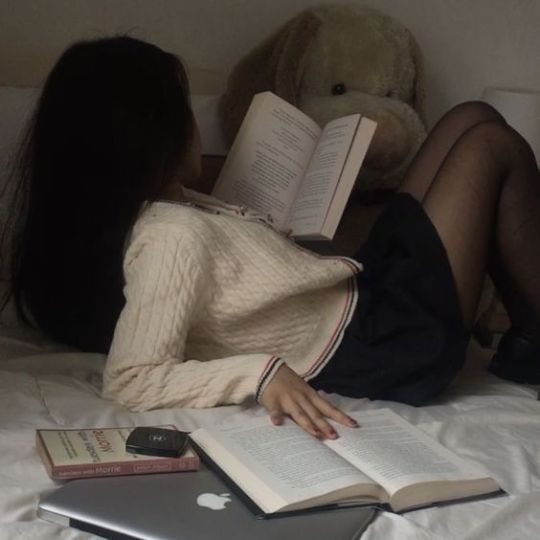
Toxic romanticization of studying
In a word of introduction, my profile partly shows that studying and exploring is wonderful. But as a person involved in science*, I would like to show healthy and true patterns of this beautiful adventure in acquiring knowledge.
The inspiration for writing this post this time was not the phenomenon from Tumblr (although you can also observe it here), but from Pinterest. There you can come across cycles composed of quotes and photos whose aim is to motivate young girls to learn, succeed and get good grades. These images often also show examples of characters from movies, TV series or real life that you can aspire to be like. Overall, I have to agree that it really works! But I would like to draw attention to certain elements that need to be verified.
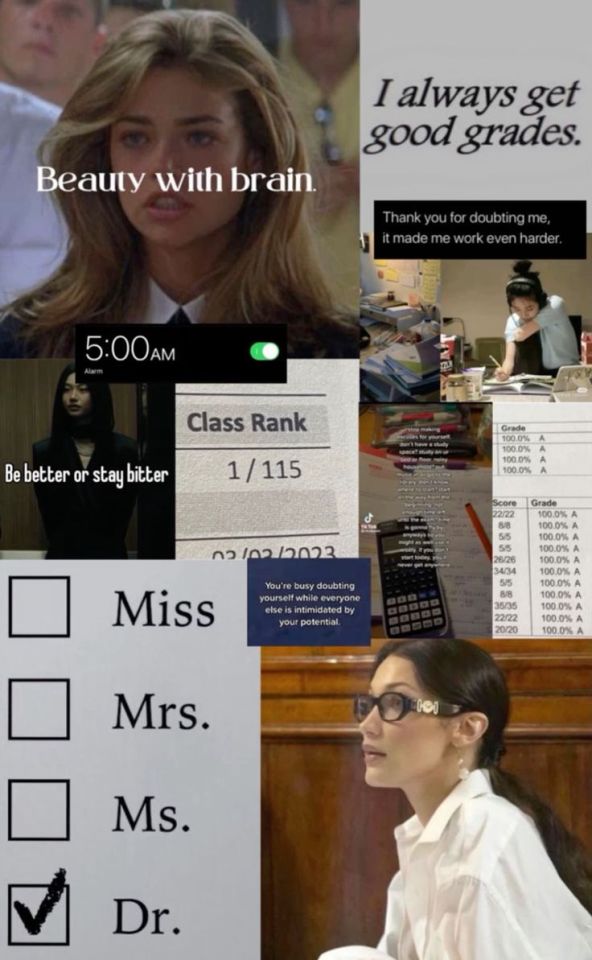


1. You shouldn't get up at 5am
First of all, the correct amount of sleep is one of the most important factors affecting the proper and effective functioning of our brain. During sleep, nerve cells regenerate, organize information acquired during the day and consolidate memory traces, which is directly related to learning. Lack of sleep increases impulsivity, deepens negative thinking and slows down the body's reaction time!
2. You can be a genius without good grades
Of course, good grades are a pleasant confirmation of our knowledge and praise for hard work. However, sometimes it is worth considering whether the structure of exams themselves, especially those with closed questions, affects the results. We often study for one specific exam, the knowledge of which may be very… limited and sometimes not useful, so it is worth prioritizing the topics that we study hard.
3. It's not cool to think you're better than others
We are different and have different priorities in life. It is also worth considering how many people escape from the rat race and start a slow, stress-free life. So we have to agree that judging people based on grades or responses under stress (sic!) is not cool.
The good thing about romanticizing studying
As I have already said, these types of collages are really motivating. So let's talk about what's great about them and what's worth highlighting and saving for later.
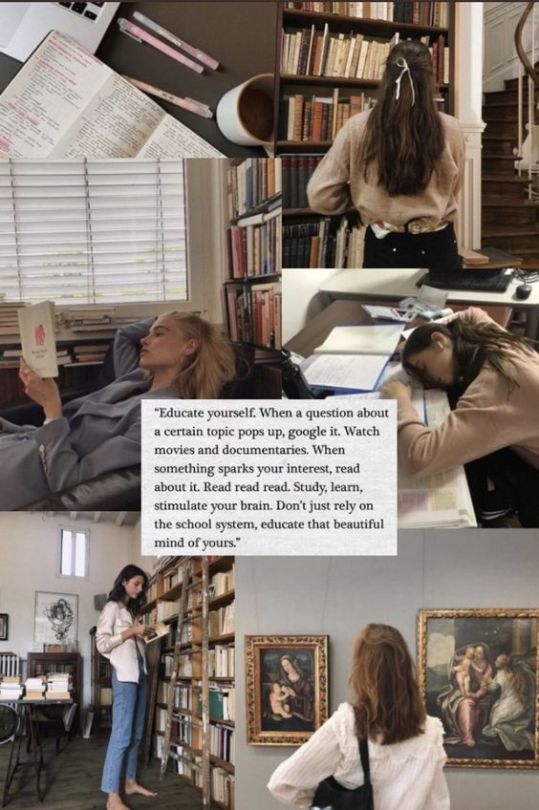

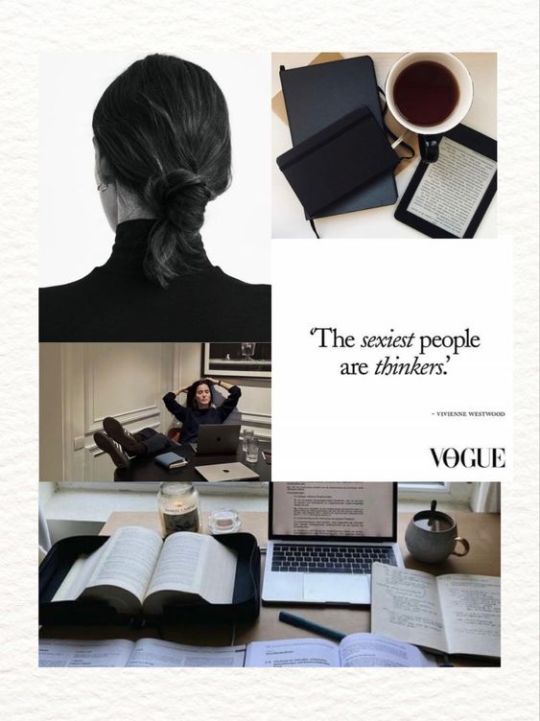
1. Knowledge is beautiful, but your outfit and surroundings can also be
We know that we should never judge a book by its cover, but… the issue of social perception painfully confirms that we do and will continue to do so because this is how our brains work. And isn't it nice when someone looks at us and thinks this girl is so classy?
Moreover, a nice outfit that makes us feel good gives us a lot of self-confidence. There are also many studies confirming the positive impact on motivation and concentration of a neat and aesthetic workplace.
2. Not just cramming, but also discovering
Broadening your horizons is easier with passion and real commitment. And to achieve this, the topics must really interest us. Not everyone has yet found something that they are extremely passionate about in science, so that is why you have to dig deeper and discover different areas.
3. Don't be afraid to use your knowledge in practice
Schools and universities, unfortunately, have their own rules and they do not always allow you to show your 100% potential. Thus, share your knowledge with others externally, write essays, blog and social media. This form of activity also makes you learn things faster and easier. In addition, contacts with others will expand your knowledge.


Therefore, I must say that it is worth choosing your inspirations carefully. Nothing helps you enjoy studying better than a clear head and lack of prejudices.
*This post was inspired by my own experience with studying. If anyone is interested, I think I can share my mistakes that did not help me in an academic adventure :)
#study aesthetic#healthy studying#study motivation#studyblr#dark academia#light academia#studyspo#study inspiration#study inspo#study blog#studying#productivitytips#studyblr community
901 notes
·
View notes
Text
When Tulips Kiss | Hwang Hyunjin SMAU

you and hyunjin were THE couple back in high school, and the two of you thought that you had found your perfect match. until one day, one misunderstanding turned everything around. the love that you had for one another turned into spite, anger, and hatred. a few years later, one of your best friends since childhood came home from studying abroad, resulting in your friend group to finally be complete again. but on your way to meet up with your friends at the local boba place, you run into the one whom you have grown to despise.
PAIRING: hwang hyunjin x f!reader
GENRE: social media au (with written parts), university au, non-idol au, crack, fluff, angst, slow burn, enemies to lovers, lots of push and pull, hyunjin’s a fuckboy
WARNINGS: mature themes, profanity, suggestive and talks of sexual intercourse, kms+kys jokes
FEATURED IDOLS: all stray kids members, soloist chuu, jiwon of fromis_9 (y/n fc), chaewon of le sserafim, and more
STATUS: ongoing
DISCLAIMER: this is 100% fiction and doesn’t portray how the featured idols act in reality, this is made purely for entertainment
𝜗𝜚 NAVIGATION

PROFILES: 𝜗𝜚 sonny angels || 𝜗𝜚 big hero 6
ZERO || introduction
ONE || let’s get the band back together!
TWO || we are SO back
THREE || LOVESTAY NIGHTCLUB!!!
FOUR || something about her
FIVE || hyunjin approved (?)
SIX || civil
SEVEN || the best of both worlds
EIGHT || de-stress
NINE || happy birthday
TEN || what is she doing?
ELEVEN || nintendo
TWELVE || keep it down
3TEEN || who are you
4TEEN || friends
5TEEN || don’t be mean
6TEEN || wish you were sober
7TEEN || hush up boy
8TEEN || ayen on top!
9TEEN || no feelings at all?
TWENTY || what a coincidence
TWENTY-ONE || gyu
TWENTY-TWO || guitar hero
TWENTY-THREE || take a hint
TWENTY-FOUR || nobody’s surprised
TWENTY-FIVE || log off.
TWENTY-SIX || WRONG ACCOUNT.
TWENTY-SEVEN || am i cooked?
TWENTY-EIGHT || nothing has changed
TWENTY-NINE || the second time?
THIRTY || a win is a win
THIRTY-ONE || #needthat
THIRTY-TWO || i’m a simp
THIRTY-THREE || i like studio ghibli
THIRTY-FOUR || throwback
THIRTY-FIVE || hwangster
THIRTY-SIX || better off
THIRTY-SEVEN || what if
THIRTY-EIGHT || + hyune
THIRTY-NINE || goodnight
FORTY || our gf
FORTY-ONE || THAT’S TERRIBLE
FORTY-TWO || …
FORTY-THREE || …
FORTY-FOUR || …
FORTY-FIVE || …
AND MORE TO COME…

TAGLIST (CLOSED)!
#𐙚 H.HJ ⋮⟢ series#📁: 현진 🥟#when tulips kiss#hwang hyunjin#hyunjin#stray kids#hyunjin x reader#skz#skz hyunjin#hyunjin smau#skz smau#smau#stray kids smau#stray kids social media au#stray kids smau series#han jisung#jeongin#bang chan#changbin#lee felix#lee know#seungmin#skz han#skz i.n#skz jisung
721 notes
·
View notes
Text
Week 3 - Introduction to Camera
What is a Camera?

A camera is an instrument used to capture and store images and videos, either digitally via an electronic image sensor, or chemically via a light-sensitive material such as photographic film.

Parts of Camera
Viewfinder - The viewfinder is one of the most important parts of a camera. It is a rectangular-shaped part at the back of your camera that lets you see and frame your subject.
Pentaprism - The pentaprism is a mirror placed at a 45-degree angle behind the camera lens. The mirror projects the light captured from the lens to the viewfinder.
Built-in Flash - A built-in flash is the part of the camera’s anatomy that produces a burst of light when triggered. It has a fixed position on the front or top of the camera to allow it to illuminate the subject. The built-in flash fires only when the camera takes a picture.
Flash Button - The flash button is present on cameras with a built-in pop-up flash. Its main functionality is to force the flash to open before triggered.
Lens Mount - A lens mount is the mechanical fitting that allows the lens to attach to the camera.
Lens Release Button - The lens release button unlocks the lens mount and allows you to detach the lens.
Mode Dial - A mode dial is one of the most used parts of the camera. It is a small cogwheel situated on the top-right of the camera that switches between the camera’s modes.
Focusing Screen - A camera’s focusing screen is the glass surface on which the camera’s mirror projects the image. The focusing screen helps in achieving various focus effects such as sharp and high-contrast shots.
Condenser Lens - A condenser lens has two matching convex lenses. This part uses a simple method for correcting color fringing or aberration that is a common problem encountered when using traditional camera lenses.
Digital Sensor - The digital sensor of a camera is one of its most delicate parts. This sensor captures the light coming from the lens to create an image.
Grip - The grip is the right side of a camera, which has a special curved design to allow you to comfortably handhold the camera. It usually provides space to place your fingers and securely hold the camera. The grip usually has a different texture than the rest of the camera.
Shutter - The shutter is an opaque piece of metal or plastic that controls the amount of light that reaches the camera sensor.
Display - The camera display shows the user helpful information about the photos and the camera. Here you will see the different camera settings you can tweak to alter your exposure, ISO, shutter speed, and more.
Shutter Button - The shutter button is one of the most iconic parts of a camera. The button tells the camera to release the shutter and take a picture.
Aperture - Aperture is one of the three pillars of determining the exposure of your photographs. Additionally, aperture is the opening in your lens through which light passes through. This part has small, thin blades that shrink or expand depending on how much light you want in your exposure.
ISO - ISO refers to the camera sensor’s sensitivity to light.
Memory Card Slot - The memory card slot is where the camera’s memory card is inserted. The memory card stores all the photographs taken by the camera.

Camera Angles
High-Angle - A high-angle shot is a cinematography technique where the camera points down on the subject from above. This type of shot is used to make the subject or object below seem vulnerable, powerless, or weak.
Low-Angle - A low-angle shot is when the camera is positioned low on the vertical axis, below the level of the eyeline, and looks up at an object or subject above. This camera angle evokes a psychological effect by making the subject above, which the camera is angled at, look strong and powerful.
Over the Shoulder - The over the shoulder shot, is most commonly used in film when two or more characters are talking to each other in conversation. This type of shot is used to establish eyeline of where each character in the scene is looking, and is most commonly framed through a medium or close-up shot.
Bird’s Eye - The bird’s eye view shot, or an aerial view shot, is when the camera is located up above, overhead, capturing the action going on below. In today’s day and age, these types of shots are most commonly captured with a drone in order to be able to get the full view of what is happening down below.
Dutch Angle/Tilt - The Dutch angle/tilt is more of a stylistic approach to cinematography. In order to execute this, you must tilt your camera to one side, which results in a frame that is not level. This type of camera angle is used mostly to create a dramatic effect within a film and can evoke a series of different emotions. The Dutch angle can heighten psychological distress and tension, which in turn, creates a cinematic environment that creates suspense and a sense of thrill.
1 note
·
View note
Text

You have questions! We might have answers.
What is this collection?
As Maria puts it: this collection is a critical look at some of the things that we, the editors, think have made CQL such a hit around the world. Of course, part of that success comes from the webnovel MDZS and the show CQL themselves—we love the characters, the mystery, and the drama, who doesn’t?! However, the authors in our book also look at topics like translating danmei (both officially and unofficially), adapting danmei for new audiences, and interacting with fandoms and fanworks. The larger argument of the book is that all of these things played a huge role in CQL’s visibility and success, and we wanted to start making those moving pieces visible, especially for audiences who mainly watched CQL in translation.
You keep using the word “academic”—what does that mean, exactly?
Maria: Ok, not to get pedantic here, but this actually touches on some things that I’m really excited about for the book. Traditionally, academic work is written by people who have a deep expertise in the subject (signified by having a PhD and doing specific kinds of research), and then the work itself is peer-reviewed (i.e., sent to other experts in the field for them to evaluate whether it’s sound, original, and interesting enough to publish, without knowing who wrote it). And both of these things are true about our book—our authors have deep knowledge and the book was peer reviewed—but also. We specifically asked for chapters from younger scholars and from fans who also have deep knowledge about topics that academia doesn’t always know or value enough, and we include an interview from the fan-translator K. who did the Exiled Rebels translation. So the hope is that: this book is academic, and also—more!
Who are you?
Yue studies adaptation, fantasy, and popular culture texts using a feminist lens. She wrote an early, influential article about danmei adaptations and also has a book about feminist adaptations of Chinese fantasy.
Maria studies fanworks, contemporary fantasy, and genre literature. She’s scrambling to finish her dissertation right now.
How were the chapter spotlights chosen?
Voluntarily! The concept of a small social media promo was kicked around by some of the contributors and those interested in the idea filled out a short interview with what they wanted to share. We'll be posting about 2 introductions and 2 spotlights a day for the next week or so!
Who's running this social media campaign anyway?
Not the publishers! A few enthusiastic collection contributors got together and, with the assistance of the editors, have put this promotion together. We do not in any way represent Peter Lang in an official capacity! We just worked hard and wanted to share. :)
Are you making any money off of royalties from this book?
LOL not even remotely
What about this promotion?
also no. alas
Where can I find this book?
You can find our listing on Peter Lang’s website here. As for other retailers, a quick search should turn us up!
How can I access this book if I cannot buy it from Peter Lang / [book retailer of choice]?
As collection editors and contributors who signed a legal agreement with Peter Lang, we have granted Peter Lang exclusive right and license to edit, adapt, publish, reproduce, distribute, display, and store our contributions, and we must cooperate fully with the Publisher if the Publisher believes a third party is infringing or is likely to infringe copyright in the contribution.
That being said, these are academic papers, which means that contributors may make copies of the contribution for classroom teaching use! (These copies may not be included in course pack material for onward sale by libraries and institutions). Of course, any linking, collection or aggregation of chapters from the same volume is strictly prohibited.
(FAQ may be updated periodically!) (all posts on Catching Chen Qing Ling)
#MDZS#CQL#The Untamed#Grandmaster of Demonic Cultivation#Catching Chen Qing Ling#CQL academic collection#CQL CFP#Chen Qing Ling#Mo Dao Zu Shi#CQL meta#MDZS meta
352 notes
·
View notes
Text
Asexual Non-Fiction
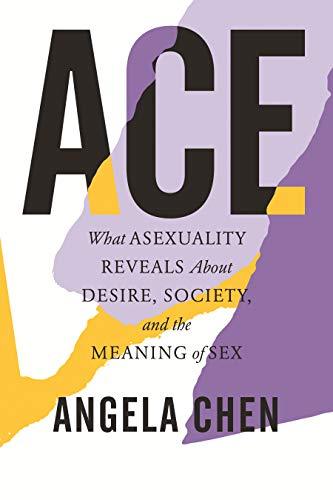

Ace: What Asexuality Reveals About Desire, Society, and the Meaning of Sex by Angela Chen
An engaging exploration of what it means to be asexual in a world that's obsessed with sexual attraction, and what we can all learn about desire and identity by using an ace lens to see the world. Through interviews, cultural criticism, and memoir, ACE invites all readers to consider big-picture issues through the lens of asexuality, because every place that sexuality touches our world, asexuality does too.
The Invisible Orientation: An Introduction to Asexuality by Julie Sondra Decker
In The Invisible Orientation, Julie Sondra Decker outlines what asexuality is, counters misconceptions, provides resources, and puts asexual people's experiences in context as they move through a very sexualized world. It includes information for asexual people to help understand their orientation and what it means for their relationships, as well as tips and facts for those who want to understand their asexual friends and loved ones.


How to Be Ace: A Memoir of Growing Up Asexual by Rebecca Burgess
In this brave, hilarious and empowering graphic memoir, we follow Rebecca as they navigate a culture obsessed with sex—from being bullied at school and trying to fit in with friends, to forcing themself into relationships and experiencing anxiety and OCD—before coming to understand and embrace their asexual identity.
A Quick & Easy Guide to Asexuality by Molly Mulldoon and Will Hernandez
Writer Molly Muldoon and cartoonist Will Hernandez, both in the ace community, are here to shed light on society’s misconceptions of asexuality and what being ace is really like. This book is for anyone who wants to learn about asexuality, and for Ace people themselves, to validate their experiences. Asexuality is a real identity and it’s time the world recognizes it. Here’s to being invisible no more!


Asexualities: Feminist and Queer Perspectives edited by Karli June Cerankowski and Megan Milks
As the first book-length collection of critical essays ever produced on the topic of asexuality, this book serves as a foundational text in a growing field of study. It also aims to reshape the directions of feminist and queer studies, and to radically alter popular conceptions of sex and desire. Including units addressing theories of asexual orientation; the politics of asexuality; asexuality in media culture; masculinity and asexuality; health, disability, and medicalization; and asexual literary theory, Asexualities will be of interest to scholars and students in sexuality, gender, sociology, cultural studies, disability studies, and media culture.
Refusing Compulsory Sexuality: A Black Asexual Lens on Our Sex-Obsessed Culture by Sherronda J. Brown
In this exploration of what it means to be Black and asexual in America today, Sherronda J. Brown offers new perspectives on asexuality. She takes an incisive look at how anti-Blackness, white supremacy, patriarchy, heteronormativity, and capitalism enact harm against asexual people, contextualizing acephobia within a racial framework in the first book of its kind. A necessary and unapologetic reclamation, Refusing Compulsory Sexuality is smart, timely, and an essential read for asexuals, aromantics, queer readers, and anyone looking to better understand sexual politics in America.


I Am Ace: Advice on Living Your Best Asexual Life by Cody Daigle-Orians
Within these pages lie all the advice you need as a questioning ace teen. Tackling everything from what asexuality is, the asexual spectrum and tips on coming out, to intimacy, relationships, acephobia and finding joy, this guide will help you better understand your asexual identity alongside deeply relatable anecdotes drawn from Cody's personal experience. Whether you are ace, demi, gray-ace or not sure yet, this book will give you the courage and confidence to embrace your authentic self and live your best ace life.
Ace Voices: What it Means to Be Asexual, Aromantic, Demi or Grey-Ace by Eris Young
Drawing upon interviews with a wide range of people across the asexual spectrum, Eris Young is here to take you on an empowering, enriching journey through the rich multitudes of asexual life. With chapters spanning everything from dating, relationships and sex, to mental and emotional health, family, community and joy, the inspirational stories and personal experiences within these pages speak to aces living and loving in unique ways. Find support amongst the diverse narratives of aces sex-repulsed and sex-favourable, alongside voices exploring what it means to be black and ace, to be queer and ace, or ace and multi-partnered - and use it as a springboard for your own ace growth.


Asexual Erotics: Intimate Readings of Compulsory Sexuality by Ela Przybylo
Through a wide-ranging analysis of pivotal queer, feminist, and anti-racist movements; television and film; art and photography; and fiction, nonfiction, and theoretical texts, each chapter explores asexual erotics and demonstrates how asexuality has been vital to the formulation of intimate ways of knowing and being. Asexual Erotics assembles a compendium of asexual possibilities that speaks against the centralization of sex and sexuality, asking that we consider the ways in which compulsory sexuality is detrimental not only to asexual and nonsexual people but to all.
Ace Notes by Michele Kirichanskaya
As an ace or questioning person in an oh-so-allo world, you're probably in desperate need of a cheat sheet. Covering everything from coming out, explaining asexuality and understanding different types of attraction, to marriage, relationships, sex, consent, gatekeeping, religion, ace culture and more, this is the ultimate arsenal for whatever the allo world throws at you.


Ace and Aro Journeys: A Guide to Embracing Your Asexual or Aromantic Identity by The Ace and Aro Advocacy Project
Join the The Ace and Aro Advocacy Project (TAAAP) for a deep dive into the process of discovering and embracing your ace and aro identities. Empower yourself to explore the nuances of your identity, find and develop support networks, explore different kinds of partnership, come out to your communities and find real joy within. Combining a rigorous exploration of identity and sexuality models with hundreds of candid and poignant testimonials - this companion vouches for your personal truth, wherever you lie on the aspec spectrum.
Sounds Fake But Okay: An Asexual and Aromantic Perspective on Love, Relationships, Sex, and Pretty Much Anything Else by Sarah Costello and Kayla Kaszyca
Drawing on Sarah and Kayla's personal stories, and those of aspec friends all over the world, prepare to explore your microlabels, investigate different models of partnership, delve into the intersection of gender norms and compulsory sexuality and reconsider the meaning of sex - when allosexual attraction is out of the equation.
3K notes
·
View notes
Text
Free MIT online courses that sound interesting
Arts & Literature
Introduction to World Music
Reading Fiction
Literary Interpretation: Virginia Woolf's Shakespeare
Introduction to Photography
Foundations of Western Culture II: Renaissance to Modernity
Studies in Poetry - Briths Poetry and the Sciences of the Mind
Studies in Literary History: Modernism: From Nietzsche to Fellini
Screen Women: Body Narratives in Popular American Film
Studies in Poetry: "What's the Use of Beauty"
Queer Cinema and Visual Culture
Monteverdi to Mozart: 1600 - 1800
Writing and Experience: Reading and Writing Autobiography
Advanced Topics in Hispanic Literature and Film: The Films of Luis Buñel
Major Authors: Rewriting Genesis: "Paradise Lost" and Twentieth-Century Fantasy
Arthurian Literature and Celtic Colonization
Contemporary Literature: Britsh Novel Now
Studies in Poetry: 20th Century Irish Poetry: The Shadow of W. B. Yeats
Writing About Literature: Writing About Love
Introduction to European and Latin American Fiction: Great Books On The Page and On The Screen
Popular Culture and Narrative: Use and Abuse of the Fairy Tale
Victorian Literature and Culture
Reading Poetry
English Renaissance Drama: Theatre and Society in the Age of Shakespeare
Introduction to Fiction
International Woman's Voice
Major Authors: Oscar Wilde and the "90's"
Prizewinners: Nobelistas
American Authors: American Women Authors
Shakespeare, Film and Media
Japanese Literature and Cinema
Woman's Novels: A Weekly Book Club
Classics of Chinese Literature
Major English Novels
Topics in South Asia Literature and Culture
Introduction to Literary Theory
History & Social Studies
American Classics
The Middle East in the 20th Century
Africa and the Politics of Knowledge
The Rise of Modern Science
European Imperialism in the 19th and 20th Century
Philosophy of Love
Human Rights: At Home and Abroad
The Nature of Creativity
Introduction to Comparative Politics
Riots, Rebellions, Revolutions
Introduction to the History of Technology
Ancient Philosophy
Youth Political Participation
#studyblr#study resources#dark academia#light academia#chaotic academia#romantic academia#adhd academia#studyblr brazil#literature#art academia#mit#free courses#study#collegeblr#studyblr college
2K notes
·
View notes
Text
commercial
alessia russo x actress!reader (requested)
summary: pairing up with a footballer for a commercial changed your life
based off of the adidas commercial she was featured in before the women's world cup in 2023

you never thought filming a commercial would bring you to london.
being an actress with a hit hbo series and a partnership with adidas kept you busy, traveling constantly between coasts, countries, and continents.
this job felt different. you’d always admired women’s sports, so when your agent called you with the news that adidas wanted you for their new campaign promoting the women's world cup, it felt like an honor.
empowering women, celebrating athletes—it was something you could get behind since its what you cared about. you said yes without a second thought.
now, with a plane ticket in hand, you were ready to make it happen.
the moment you step off the plane at heathrow, london’s summer breeze hits you—crisp, slightly cool, and carrying the scent of rain and freshly brewed coffee. your driver, an older man with a kind smile, helps load your bags, and you’re soon winding your way through the city streets.
as you look out the car window, everything feels vibrant and alive. red double-decker buses whizz by, people spill out of cafes, and there's a constant hum in the air.
despite being a little jet-lagged, you’re excited—more excited than you've been for a job in a long time.
the next morning, you arrive on set for the commercial shoot, and it’s a whirlwind of motion—producers barking orders, cameras being set up, and the smell of fragrancelingering in the air.
a production assistant greets you almost the second you step out of your car, a polite smile on their face, speaking rapidly into their headset.
"y/n, so glad you could make it! we’re just about to start introducing everyone. can i take you to meet the other talents– the footballers i shall say?”
you nod, straightening your posture and reminding yourself to relax.
just another job, just another set. yet the excitement buzzing in the air makes your nerves tingle. the assistant leads you toward the back of the set, where a few women stand, laughing easily with one another.
you recognize them immediately.. lena oberdorf, mary fowler, and alessia russo. you’d seen their photos in the media. never having enough time to watch ninety minutes of football, you still knew how good they were.
lena is first to notice you.
“y/n!! you’re kidding?!!” she says to mary with a friendly smile, sticking her hand out. “nice to meet you.”
you shake her hand, grinning. “nice to meet you too. i’m a big fan of your game.”
“and i am a big fan of yours!!” lena says, seeming genuinely pleased. “looking forward to working with you today. the concept seems fun.”
mary and alessia both chime in their greetings.
there’s a moment of small talk as you chat about the campaign, the concept, and the filming schedule. but as you exchange introductions, your eyes keep drifting back to alessia.
there’s something about her that draws you in—something in the way she carries herself, confident yet laid-back, with a gaze that's intense but kind. and when her eyes meet yours, you swear you see a flash of something else, something that makes your heart skip.
“so, you’re an actress..” alessia says finding small talk, leaning in a little closer. her voice has a certain lilt to it. warm, curious.
“yeah,” you reply, trying to keep your voice steady,
“i’ve been working in television for a while, but this is my second sports commercial.”
“oh, really?” alessia tilts her head, her blonde hair falling to the side as she studies you.
“guess we’re both kind of stepping into each other’s worlds for this one. i’ve never done a commercial myself unless it was for arsenal.”
“well, from what i’ve heard, you’ll be great,” you say, and it’s not just a compliment. you mean it.
you’ve heard from your assistant about alessia playing for the england national team. she must be amazing.
alessia chuckles softly, and you catch the way her eyes sparkle, like she's genuinely enjoying the conversation.
“we’ll see,” she says, that easy confidence still there but with a playful glint.
“just don’t laugh at me if i mess up my lines.”
you shake your head, laughing. “only if you promise not to laugh at me trying to dribble a football.”
“deal,” alessia says, flashing you a grin that makes you wonder just how often she uses that smile to get what she wants.
there’s something magnetic about her, and as much as you try to focus on the task at hand, your mind keeps circling back to her.
soon, it’s time to start filming, and the director calls everyone to their positions. the first scene you're shooting together is a lighthearted setup in a grocery store, meant to highlight how sports are part of everyday life.
you and alessia are supposed to be casually shopping, pretending to pick out items until a boy accidentally passes a football to alessia, who starts dribbling the ball fantastically.
the idea is to show how these footballers are stars both on and off the pitch—effortlessly cool, effortlessly themselves.
you’re on the camera for the attention, the familiarity of many people seeing one of their favorite actresses on screen.
as the cameras roll, you find yourself struggling to stay in character—not because you're nervous, but because you're genuinely awestruck.
alessia makes it all look so easy. she maneuvers the ball around her feet effortlessly, as if it’s a natural extension of her body, and at one point, she jumps up and crosses her legs to move the ball up in a seamless move.
the crew claps and cheers after the director says cut, and you have to remind yourself to look casual, to pretend like this is something you see every day.
"you okay there?" alessia whispers when you find yourself staring for a second too long.
"yeah, totally," you reply, trying to play it off. "just, you know, impressed. you're kind of amazing."
“kind of?” she teases, raising an eyebrow. “i’ll take that, i guess.”
you both laugh, and the rest of the shoot continues with an easy flow.
the chemistry between you translates on camera, and the director nods approvingly after each take.
by the time you wrap for the day, you're already regretting that it has to end so soon.
as everyone’s packing up, alessia walks over to you, her expression a mix of mischief and curiosity.
“hey, i know you’re busy with your job but... do you have any plans while you're here in london?”
“not really,” you say, glancing down as you fidget with your hands.
“i have some interviews coming up in new york soon, but other than that, i’m kind of free.”
“oh,” she says, her voice light but her eyes steady on yours.
“how about we grab dinner tonight? there’s this great italian spot not too far from here—i thought it might be nice to hang out without all of the chaos.”
you don’t even have to think about it. “yeah, i’d like that a lot.”
later that evening, alessia takes you to a cozy restaurant tucked away in a quiet corner of london.
it’s intimate, dimly lit, with exposed brick walls and a menu that makes your mouth water the second you open it. the conversation flows easily—surprisingly easily—and you talk about everything from football and acting to travel, family, and your favorite shows outside of the ones you’ve been in.
it feels like you’ve known each other for longer than a day.
“so, you travel a lot for work,” alessia says at one point, sipping on her lemon water.
“ever get tired of it?”
“sometimes,” you admit.
“but it’s also kind of amazing. i mean, many people would do anything for the opportunities that i’ve been given—like getting to meet people like you for example.”
alessia laughs softly, shaking her head. “you’re flattering me.”
“maybe,” you say with a playful smile, “but it’s the truth.”
alessia leans back in her chair, and there’s a look in her eyes you can't quite place—somewhere between admiration and something deeper, something that makes your stomach flip.
“you know, you’re not what i expected,” she says, voice gentle but sincere.
“what do you mean?” you ask, genuinely curious.
“i don’t know, someone... a little more hollywood, i guess?” she shrugs.
“i get it. luckily i’m not from hollywood, i am from new york.” you smile.
“that’s nice to hear.” alessia giggles.
the conversation continues late into the night, and by the time you both walk out into the cool london air, you’re standing a little closer than necessary, arms brushing as you make your way down the street.
she walks you back to your hotel, and when you say goodnight, there’s a moment—a heartbeat of silence—where you both just look at each other, and you feel it.
something more than just a bond that was formed in one night.
“goodnight, y/n,” she says softly, lingering for just a second before turning to leave.
“goodnight, alessia,” you reply, watching her walk away, already replaying the night in your head.
the next few days fly by in a blur of filming and hanging out with alessia whenever you can.
you text constantly, even when you're both too busy. a couple of weeks later you’re in new york city with castmates on your show– and alessia is with arsenal finishing the season.
she sends quick messages between training, silly selfies with her teammates, and voice notes that make you smile every time you listen to them.
it’s not long before you’re both sharing pieces of yourselves you don’t usually let others see.
when alessia heads off to the women's world cup with england, you don’t expect to miss her as much as you do.
you haven’t seen her since that night in london. her messages get shorter, more sporadic as the competition heats up, and while you understand—she’s busy, focused—you can’t help but wish you were there to cheer her on in person.
and then, one day, you get a text from her:
wish you could be here. can't wait to see you soon!
your heart skips a beat, and without thinking, you open your laptop, check your schedule, and find a two-week window.
before you can second-guess yourself, you’re booking a flight to australia.
when you finally arrive in australia, the world cup is in full swing.
the streets are filled with fans, the excitement is in the air, and you find yourself caught up in the energy.
on the day of the final, you’re practically buzzing with nerves and anticipation. you dragged one of your castmates to come with you across the globe, just to see alessia live.
you find your seat, your heart pounding as you look out over the pitch.
when alessia takes the field, you can’t stop grinning. you cheer loudly, the sound almost getting lost in the roar of the crowd, but you know she hears you—somehow, you just know.
the match is intense, every pass and tackle pulling you deeper in. but as the final whistle blows, it’s spain who takes the victory, and the stadium is filled with a mix of cheers and groans.
your heart sinks as you watch alessia’s face fall, the disappointment clear in her expression.
as england’s players walk off the pitch, heads hung low, you feel helpless, wanting nothing more than to comfort her.
you’re not sure if she’s even seen you in the stands, and you hesitate, unsure of what to do.
then, you see leah, one of her teammates that became one of your favorites, give alessia a nudge and nod in your direction.
alessia looks up, scanning the crowd until her eyes land on you. for a moment, she’s still, and then she’s moving—walking quickly toward you, her face a mixture of surprise, relief, and something that looks like hope.
before you know it, she’s right in front of you, and you’re pulling her into your arms, holding her tight as she buries her face in your shoulder.
“i’m so proud of you,” you whisper, your voice barely audible over the noise of the crowd.
“you were amazing.”
she lets out a shaky breath, holding you close. “i didn’t expect to see you here.”
“well, i couldn’t let you play in a world cup final without me,” you say, smiling softly as you pull back just enough to look into her eyes.
“win or lose, i’m here for you.”
alessia’s eyes soften, and for a moment, the weight of the loss seems to lift. she cups your cheek with her hand, her thumb gently brushing against your skin, and you lean into the touch, your heart swelling with something warm and undeniable.
“thank you,” she whispers, her voice filled with emotion. and as the noise of the stadium fades into the background, all that matters is this—being here with her.
“maybe i can stay in london for a while, to make you feel better if thats okay?” you hug her again, holding her knowing that the world cup loss is still in her mind.
“that is more than okay, y/n.”
masterlist
356 notes
·
View notes
Text
How Shiftok Destroyed Reality Shifting/ the Reality Shifting Community

Introduction :
Reality shifting, a practice based on the belief that individuals can consciously transfer their awareness to alternate realities or dimensions, has long been a niche concept within spiritual and metaphysical circles. However, with the rise of TikTok and the emergence of "Shiftok"—a blend of "shifting" and "TikTok"—this once-obscure practice has surged into mainstream awareness, particularly among younger audiences.
This essay delves into the profound impact of Shiftok on the reality-shifting community, tracing how an intimate, esoteric practice has evolved into a viral social media phenomenon. We will explore the origins of Shiftok, its rapid ascent in popularity, and the wide-ranging effects this digital revolution has had on both the perception and practice of reality shifting.
As we navigate the various facets of this cultural shift, we'll uncover the intricate relationship between social media dynamics, youth culture, and esoteric practices. From the initial surge of excitement and growth to the emergence of concerning trends and fragmentation within the community, the Shiftok phenomenon serves as a compelling case study in how digital platforms can reshape and redefine fringe beliefs and practices.
By examining the rise of Shiftok, its impact on the shifting community, and the responses it has elicited, this essay aims to provide a comprehensive overview of the unique intersection between ancient mystical concepts and modern social media culture. Through this exploration, we will gain insights into the broader implications of viral trends on spiritual practices and the challenges faced by communities as they adapt to sudden mainstream exposure.
Disclaimers : Read the Entire thing as usual. If you did not understand something feel free to tell me i shall gladly explain it to you.
I originally intented to make a simple rant-like post called "my hatred of shiftok" where i explain a story that happened to me that caused me to despise this platform and everything it stood for.
But then i realised that making an objective, educational, informative essay about how toxic, culty and overall nasty the platform became for the reputation of the practice and the community was much more appropriate than a poorly written post .
If any of you are interested in my storytime that made me so resentful of that platform, this post needs to get 200 notes and some comments asking me for it.
So enjoy this essay that i took much pleasure in writing :
Masterlist
II-The Rise of Shiftok
Shiftok, a portmanteau of "shifting" and "TikTok," emerged as a significant phenomenon within the broader landscape of social media, specifically on the TikTok platform. Its origins can be traced back to the early 2020s when reality-shifting content began gaining traction among young users on the app. What began as a niche interest rapidly snowballed into a viral trend, captivating the imaginations of millions of users worldwide.
The growth of Shiftok was meteoric, driven by several key factors that perfectly aligned with the TikTok ecosystem. Central to its success was the platform's short-form video format, which allowed creators to distill complex reality-shifting concepts into bite-sized, easily digestible content. This format proved ideal for sharing quick tips, visualization techniques, and purported success stories, making the practice appear more accessible to newcomers.
TikTok's powerful algorithm played a crucial role in propelling Shiftok to prominence. The app's content distribution system, designed to keep users engaged by serving them content tailored to their interests, quickly identified and promoted shifting-related videos to receptive audiences. This created a feedback loop where increased engagement led to greater visibility, drawing in curious newcomers and further fueling the trend's growth.
The demographic makeup of TikTok's user base also significantly contributed to Shiftok's rise. With a large proportion of young users, particularly teenagers and young adults, the platform provided fertile ground for reality-shifting content to flourish. This age group, often characterized by a desire for escapism, self-discovery, and novel experiences, found the concept of reality shifting particularly appealing.
As Shiftok gained momentum, it initially had a positive impact on the broader reality-shifting community. The increased visibility brought about by viral TikTok videos led to a surge of interest in the practice, drawing in thousands of new enthusiasts. This influx of newcomers energized the community, sparking discussions, fostering creativity, and expanding the collective knowledge base.
The platform also facilitated unprecedented levels of community engagement. Shifters from around the world could easily connect, share experiences, and offer support to one another through comments, duets, and collaborative videos. For those who felt isolated or misunderstood in their offline lives, this sense of community was particularly valuable, providing a space where they could freely discuss their shifting experiences and beliefs.
Moreover, Shiftok became a hub for sharing diverse experiences and methods related to reality shifting. Creators competed to produce the most engaging content, leading to an explosion of creativity in how shifting techniques were presented and explained. From guided meditations set to trending sounds to elaborate "POV" (point of view) scenarios depicting life in desired realities, the content on Shiftok was varied and dynamic.
However, the rapid growth and popularization of reality shifting through Shiftok soon revealed its double-edged nature. While it brought unprecedented attention and growth to the practice, it also set the stage for significant challenges that would reshape the reality-shifting community in profound and sometimes problematic ways. The very factors that contributed to Shiftok's meteoric rise—its accessibility, algorithmic amplification, and appeal to young users—would also play a role in the issues that emerged as the trend continued to evolve.
III-Negative Effects on the Reality Shifting Community
The meteoric rise of Shiftok, which initially invigorated the reality-shifting community, soon gave way to a host of negative consequences that profoundly impacted the practice and its practitioners. As the trend gained momentum, the integrity of the shifting community began to erode under the pressures of misinformation, oversimplification, and rampant commercialization.
One of the most significant issues was the rapid spread of misinformation. The viral nature of TikTok, coupled with the absence of robust fact-checking mechanisms, created an environment where unverified claims and exaggerated experiences could proliferate unchecked. Users, eager for views and followers, often shared sensationalized accounts of their shifting experiences, blurring the line between genuine practices and fantasy. Pseudoscientific explanations for shifting, often based on misinterpretations of quantum physics or neuroscience, gained traction, lending a false air of legitimacy to questionable concepts.
This problem was further exacerbated by the emergence of viral trends within the Shiftok community. "Shifting challenges" and purported "fool-proof methods" spread rapidly, often prioritizing entertainment value over accuracy or safety. While these trends were engaging for viewers, they frequently misrepresented the nature of reality shifting, leading to confusion and unrealistic expectations among newcomers to the practice.
Another detrimental effect of Shiftok's influence was the oversimplification of shifting techniques. The platform's short-form video format necessitated the distillation of complex practices into brief, easily digestible content. This led to a proliferation of "quick and easy" methods that promised results with minimal effort or understanding. While these simplified techniques made shifting seem more accessible, they neglected the nuances and deeper aspects of the practice.
This oversimplification had far-reaching consequences. Many newcomers, drawn by the promise of instant results, became frustrated when their experiences did not match the effortless successes portrayed in viral videos. The more traditional, in-depth practices that required patience, dedication, and self-reflection were often overlooked in favor of these quick-fix solutions. This shift in focus threatened to undermine the spiritual and personal growth aspects that many long-time practitioners viewed as integral to the shifting experience.
Perhaps the most troubling development was the increasing commercialization and exploitation of the reality-shifting community. As Shiftok content gained popularity, a new breed of "shifting influencers" emerged, eager to capitalize on the trend. This led to the monetization of shifting content through sponsorships, merchandise, and paid services. While some creators genuinely aimed to help and educate, others saw an opportunity for profit, selling dubious products like "shifting crystals" or "dimensional jump sprays" with little regard for their efficacy or the potential impact on vulnerable users.
The rise of influencer culture within the shifting community also fostered an environment where popularity and engagement metrics often took precedence over the quality or accuracy of information shared. This created a perverse incentive structure where creators were rewarded for producing sensational or controversial content rather than focusing on responsible, well-researched information.
These negative effects collectively undermined the foundations of the reality-shifting community. What had once been a practice rooted in personal exploration and spiritual growth was at risk of being reduced to a commercialized trend, divorced from its original intent and values. The influx of misinformation, coupled with the oversimplification of techniques and the exploitation of practitioners, threatened to dilute the authenticity of the practice and alienate serious practitioners.
As these issues came to the forefront, they set the stage for broader impacts on both the external perception of reality shifting and the internal dynamics of the community itself. The once-unified community began to fragment, grappling with questions of authenticity, methodology, and the very nature of reality shifting in the age of viral social media trends.
IV. The Dark Side of Shiftok: Toxicity, Pressure, and Dogma in the Reality Shifting Community
The meteoric rise of reality shifting on TikTok, while bringing unprecedented attention to the practice, also uncovered a darker, more insidious aspect within the community. This phenomenon, commonly referred to as "Shiftok," became a breeding ground for toxicity, misinformation, and oppressive dogma, threatening the very essence of what many considered a deeply personal and transformative practice.
One of the most troubling developments within Shiftok was the emergence of arbitrary and often harmful age-related pressures. A particularly pernicious belief circulated that individuals who hadn't successfully shifted by a certain age, typically 18, were somehow suspect or, in extreme cases, labeled as "pedophiles" for aging themselves down for realities they made when they were minors and have romantic/sexual relationships there. This baseless and damaging accusation stemmed from the misguided notion that older shifters were attempting to reach realities where they were younger, automatically assuming predatory intentions or attraction to minors.
(This misguided notion has been debunked in this post).
This ageist dogma not only created unnecessary anxiety among practitioners but also demonstrated a fundamental misunderstanding of the diverse motivations for reality shifting. Many adult shifters, drawn to the practice for spiritual growth, self-exploration, healing, or simply out of curiosity, found themselves unfairly stigmatized and excluded from community spaces. The irony of this situation was not lost on more discerning observers, who noted that the very teenagers propagating these ideas often shifted to realities where they themselves were adults or teens, without the same scrutiny applied to older shifters—highlighting a hypocritical double standard.
The Shiftok environment grew increasingly hostile to divergent opinions or experiences that didn't align with the prevailing narrative. Users who questioned popular methods, expressed skepticism about certain claims, or shared experiences differing from the norm often faced severe backlash. This cultish adherence to a singular vision of reality shifting stifled healthy debate and critical thinking, essential components for the growth and legitimacy of any practice.
Contradictory information flourished in this echo chamber, with different factions of Shiftokers promoting conflicting "rules" about shifting. Some insisted that physical symptoms like headaches or nausea were necessary signs of an impending shift, while others claimed the process should be entirely painless. This cacophony of conflicting advice left many newcomers confused and frustrated, often leading to disillusionment with the practice altogether.
Particularly concerning was the lack of spiritual hygiene and safety measures in many Shiftok-promoted methods. In the rush to create viral content, many creators neglected to address the potential psychological and emotional risks associated with reality shifting, especially for vulnerable individuals. Basic practices like grounding, protection visualization, or setting clear intentions—staples in many traditional spiritual practices—were often overlooked in favor of quick, sensationalized techniques promising instant results.
The "TikTokification" of reality shifting led to a troubling simplification and commercialization of the practice. Complex philosophical and spiritual concepts were reduced to snappy soundbites and trendy hashtags. The depth and nuance of reality shifting, with its potential for profound personal growth and self-discovery, were often lost in a sea of shallow, entertainment-focused content.
This commercialization reached disturbing heights as some Shiftok influencers began selling "shifting aids"—everything from specially designed pillowcases to "quantum-aligned" water bottles. These products, often backed by pseudoscientific claims and endorsements from popular creators, preyed on the desperation of those struggling to achieve their first shift.
The pressure to shift successfully and quickly became overwhelming for many in the community. Stories of users spending hours each day attempting to shift, neglecting school, work, or real-world relationships, began to surface. This intensity was fueled by a culture of comparison fostered by Shiftok, where users constantly measured their experiences against the often exaggerated or fabricated successes of others.
The pervasive toxic positivity in many Shiftok spaces further compounded these issues. Users who expressed doubts, struggles, or negative experiences were often dismissed or told they simply weren't "believing" hard enough. This invalidation of genuine concerns and difficulties created an environment where many felt unable to seek help or share their true experiences.
Perhaps most troublingly, the Shiftok phenomenon began to blur the lines between reality and fantasy for some users, particularly younger ones. The constant immersion in shifting content, combined with the pressure to experience increasingly fantastical scenarios, raised concerns among mental health professionals about dissociation and reality distortion.
The lack of age-appropriate content moderation on TikTok exacerbated many of these issues. Young users were often exposed to mature or potentially traumatizing shifting scenarios without adequate context or support. The platform's algorithm, designed to maximize engagement, frequently pushed users deeper into shifting-related content rabbit holes, creating echo chambers that reinforced problematic beliefs and practices.
As the Shiftok phenomenon continued to evolve, it became evident that the toxicity, misinformation, and dogmatic thinking it fostered were antithetical to the core principles of personal growth and exploration that many associated with reality shifting. The challenge for the broader shifting community became not only to counter these negative aspects but also to reclaim and redefine the practice in a more balanced, responsible, and authentically transformative way.
V-Impact on Perception of Reality Shifting
The rise of Shiftok and its subsequent influence on the reality shifting community had far-reaching consequences that extended beyond the boundaries of TikTok and into broader public perception. As reality shifting catapulted from a niche practice to a viral trend, it faced increased scrutiny and skepticism from outsiders, fundamentally altering how the concept was perceived and discussed in mainstream discourse.
One of the most significant impacts was the surge in skepticism from those outside the shifting community. As Shiftok videos proliferated across social media platforms, reality shifting became increasingly associated with internet fads and youth subcultures. This association, while bringing attention to the practice, also invited dismissal and ridicule from skeptics who viewed it as yet another fleeting online trend rather than a serious spiritual or metaphysical practice.
The viral nature of Shiftok content, often emphasizing fantastical elements and pop culture references, contributed to widespread misconceptions about the nature and purpose of reality shifting. Many outsiders began to view shifting solely through the lens of these viral videos, equating it with lucid dreaming, role playing, or pure fantasy. This oversimplification obscured the deeper philosophical and experiential aspects of shifting that many practitioners held dear.
Media attention, drawn by the explosive growth of the trend, often approached reality shifting with a mixture of curiosity and skepticism. News articles and reports, while bringing mainstream visibility to the practice, frequently focused on the more sensational aspects of Shiftok content. This selective coverage further skewed public perception, often painting reality shifting as a potentially harmful delusion rather than a nuanced spiritual or psychological practice.
The influx of young practitioners drawn in by Shiftok also influenced how reality shifting was perceived. The predominance of teenagers and young adults (often female) in the community led many to dismiss the practice as a form of escapism or a coping mechanism for youth struggling with the challenges of adolescence and early adulthood. While there was some truth to the appeal of shifting as a form of escape, this generalization overlooked the diverse motivations and experiences of practitioners across different age groups.
Perhaps one of the most damaging impacts on perception was the trivialization of reality shifting. What had once been considered a profound, rich, complex and transformative practice by many long-time shifters was increasingly reduced to entertainment or a casual hobby for psychotic and mentally ill schoolgirls in the public eye. The depth of experience and personal growth that many attributed to their shifting journeys was often lost in the sea of light-hearted Shiftok content.
This trivialization had a particularly strong effect on how the spiritual and personal development aspects of shifting were perceived. The focus on quick results and fantastical destinations in viral content overshadowed the more introspective and growth-oriented approaches to shifting. As a result, the potential for reality shifting as a tool for self-discovery, healing, and expanding consciousness was often overlooked or dismissed by those forming opinions based solely on its social media representation.
The surge in popularity also attracted the attention of mental health professionals and researchers, some of whom expressed concerns about the potential psychological impacts of reality shifting, especially on younger practitioners. While some approached the topic with genuine curiosity and open-mindedness, others were quick to pathologize the practice, further contributing to negative perceptions.
For serious practitioners and researchers in the field, this shift in public perception presented significant challenges. Many found themselves fighting an uphill battle to legitimize their experiences and studies in the face of widespread skepticism and misconceptions fueled by Shiftok's portrayal of reality shifting.
The cumulative effect of these changes in perception created a complex and often contradictory public image of reality shifting. On one hand, it had never been more visible or widely discussed. On the other hand, this visibility came at the cost of depth and nuance, with the practice often misunderstood, trivialized, or dismissed outright by those outside the community.
This transformation in how reality shifting was perceived set the stage for further fragmentation within the community itself, as practitioners grappled with questions of authenticity, methodology, and the future direction of their practice in a post-Shiftok landscape.(By post-Shiftok i mean the period after aug-2020 to aug 2021 since it was during that year that people talked about shiftok and subsequently shifting the most in the media)
VI-Fragmentation of the community
Fragmentation of the Community
The rise of Shiftok and its profound impact on the reality shifting landscape inevitably led to significant fragmentation within the community itself. What was once a relatively cohesive group of practitioners united by shared beliefs and experiences began to splinter into various factions, each with its own perspectives on the nature and practice of reality shifting.
At the heart of this fragmentation lay heated disputes over authenticity. As the community expanded rapidly due to the influx of new practitioners drawn in by viral Shiftok content, tensions arose between long-time shifters and newcomers. Experienced practitioners often viewed the Shiftok-inspired methods and claims with skepticism, questioning the authenticity of experiences shared in short, highly edited videos. They argued that true shifting required dedication, practice, and a deep understanding of the underlying principles - elements they felt were often lacking in the quick and easy methods popularized on the platform.
This divide gave rise to intense debates about what constituted "real" shifting versus what some dismissively termed as "fake" shifting. Veterans of the practice often criticized Shiftok shifters for conflating lucid dreaming, visualization, or simple daydreaming with genuine reality shifting experiences. These disputes frequently turned acrimonious, with accusations of gatekeeping from one side and of diluting the practice from the other.
The community also witnessed the emergence of a generational gap. Older practitioners, who had been exploring reality shifting long before it became a social media trend, often found themselves at odds with the younger generation of shifters who had discovered the practice through Shiftok. This age divide was not merely about experience but also about fundamental approaches to shifting. While older shifters tended to emphasize the spiritual and personal growth aspects of the practice, many younger practitioners were drawn to shifting for its entertainment value or as a means of escaping real-world problems.
Another significant factor contributing to the fragmentation was the varying goals and motivations for shifting among practitioners. The Shiftok trend had popularized the idea of shifting to fictional universes or idealized realities, often based on popular media franchises. This contrasted sharply with more traditional approaches that focused on spiritual exploration, self-discovery, or connecting with alternate versions of oneself. The community found itself divided between those who viewed shifting as a fun, imaginative exercise (usually those people either don't believe in permashifting/respawning or say it is bad/ dangerous /problematic) and those who treated it as a serious metaphysical practice.
This divergence in goals led to the formation of distinct sub-communities within the broader shifting world. Communities flourished on other social media platforms, characterized by their focus on pop culture destinations, quick methods, and shared scripting techniques. In contrast, more traditional shifting communities sought refuge in forums, Discord servers, and other platforms that allowed for more in-depth discussions and longer-form content.
The fragmentation was further exacerbated by disagreements over methodology. Shiftok's algorithm-driven content distribution meant that certain methods and techniques gained viral popularity, often at the expense of more established practices. This led to heated debates about the efficacy and safety of various shifting methods, with some practitioners warning against the potential dangers of techniques that promised quick results without proper grounding or protection.
As the community continued to fracture, it became increasingly difficult for newcomers to navigate the conflicting information and polarized viewpoints. Many found themselves caught between the allure of the easy, accessible methods promoted on Shiftok and the more rigorous, traditional approaches advocated by experienced shifters. This confusion often led to frustration and disillusionment, with some abandoning the practice altogether.
The fragmentation also had implications for the collective knowledge and support systems within the shifting community. As practitioners increasingly segregated themselves into like-minded groups, the free exchange of ideas and experiences that had once characterized the community began to break down. This siloing effect threatened to stunt the growth and evolution of reality shifting as a practice, with valuable insights and techniques potentially being lost in the noise of inter-community conflicts.
As the reality-shifting community continued to grapple with these internal divisions, it became clear that the impact of Shiftok had irrevocably altered the landscape of the practice. A practice that was characterized by its beauty, complexity and richness whose practitioners could talk about philosophy culture and spirituality four hours, has been watered down, dumbed down into a bunch of mentally ill schoolgirls shifting to get railed by wizard nazis and hysterical teenagers who would cuss someone's entire bloodline for doubting or questioning the practise. Which is something totally valid and proves that those individuals do not know anything about the practice at all.
Honestly i cannot blame when antishifters claim that reality shifting is a cult since it is all they see and are being shown. People dismissing their pain under a toxic positive statement of “you haven't tried harder”or “just believe more” coupled with contradictory and hypocritical statements, makes it impossible to break free from those stereotypes.
VII-Psychological and Ethical Concerns
The meteoric rise of Shiftok and its profound impact on the reality shifting community gave rise to a host of psychological and ethical concerns that extended far beyond the realm of social media trends. As the practice gained widespread popularity, particularly among younger audiences, mental health professionals, ethicists, and even some within the shifting community itself began to voice apprehensions about the potential risks and implications of this phenomenon.
One of the primary psychological concerns centered around the addictive nature of both shifting experiences and Shiftok content itself. Many practitioners, especially younger ones, reported spending hours consuming shifting-related videos, often at the expense of real-world responsibilities and relationships. This obsessive engagement with Shiftok content, coupled with the allure of escaping to idealized realities, raised fears about the development of maladaptive coping mechanisms and potential neglect of personal growth in the physical world.
The immersive nature of reality shifting experiences also sparked debates about the risk of dissociation and reality distortion. Some mental health experts expressed concern that frequent shifting, especially for extended periods, might blur the lines between perceived realities, potentially leading to difficulties in distinguishing between shifted experiences and waking life. This was particularly worrisome for individuals with pre-existing mental health conditions or a predisposition to dissociative disorders.
The use of reality shifting as a form of escapism became another point of contention. While many practitioners viewed shifting as a harmless and even beneficial way to explore alternate realities or cope with stress, critics argued that it could become a means of avoiding real-life issues rather than addressing them. The concern was that vulnerable individuals, particularly adolescents facing challenging life circumstances, might retreat into desired realities rather than developing crucial life skills and resilience.
Ethical considerations also came to the forefront, particularly regarding the age-appropriateness of shifting content and the safeguarding of young users. The prevalence of young teenagers in the Shiftok community raised questions about the potential impact of reality shifting on developing minds. Some worry that exposure to intense or mature themes in desired realities could be psychologically damaging for younger practitioners who might not have the emotional maturity to process such experiences.
The responsibility of content creators became a significant ethical issue. As Shiftok influencers gained massive followings, often consisting largely of impressionable youth, questions arose about their duty of care. Many creators, in their pursuit of views and engagement, shared unverified methods or exaggerated claims about shifting successes. This raised concerns about the potential for manipulation or the inadvertent promotion of harmful practices, especially given the lack of scientific consensus on the nature and effects of reality shifting.
Another ethical dilemma emerged around the potential for reality shifting communities to develop cult-like characteristics. The intense belief systems surrounding shifting, combined with the charismatic influence of popular Shiftok creators, created an environment where some practitioners became deeply emotionally invested in the practice. This led to fears about the vulnerability of members to exploitation or the development of unhealthy group dynamics.
The commercialization of reality shifting through Shiftok also raised ethical red flags. As creators began selling products, services, or exclusive content related to shifting, questions arose about the morality of profiting from a practice that many viewed as a deeply personal or spiritual endeavor. There were concerns about the exploitation of believers, particularly when unproven products or techniques were marketed as enhancing shifting abilities.
Within the shifting community itself, practitioners grappled with the ethics of their practice. Debates arose about the morality of shifting to realities where one might engage in behaviors considered unethical in the physical world. This led to philosophical discussions about the nature of reality, free will, and personal responsibility across multiple perceived realities.
The long-term psychological effects of reality shifting remained a topic of intense speculation and concern. With little scientific research on the subject, many wondered about the potential impacts on personality development, identity formation, and overall mental well-being, especially for those who began shifting at a young age.(around puberty so 13-15 where people can be very malleable )
As these psychological and ethical concerns came to light, calls for more research and responsible practices within the shifting community grew louder. Some advocates pushed for the development of ethical guidelines for Shiftok creators, while others emphasized the need for mental health resources tailored to the unique challenges faced by reality shifters.
The reality shifting community found itself at a crossroads, forced to confront these complex psychological and ethical issues. As the practice continued to evolve in the wake of the Shiftok phenomenon, addressing these concerns became crucial not only for the well-being of individual practitioners but also for the long-term sustainability and credibility of reality shifting as a whole.
One of the most important ways to counter, prevent, or mitigate the dangers of reality shifting is through the practice of Spiritual Hygiene. Unfortunately, this concept seems to be something that many Shiftokers fail to grasp, highlighting their lack of concrete knowledge about the practice. It's particularly frustrating that these individuals are often the most visible within the community, while true experts with deeper understanding are overshadowed.
Reality shifting, whether people accept it or not, is inherently a spiritual practice. By its very nature, shifting cannot be scientifically proven—yet, it also cannot be disproven. This makes it a unique and highly subjective experience, with each shifter’s journey being distinct. If shifting were to be scientifically validated, it would become an objective practice, leading to uniform experiences across the board.
Given its spiritual nature, maintaining spiritual hygiene is essential. One cannot embark on this journey and neglect such a fundamental concept. The saying, "healthy body, healthy mind; healthy mind, healthy body," perfectly encapsulates why spiritual hygiene is a necessity in shifting. When people neglect it, they often experience mental and physical harm, which they mistakenly attribute to the practice of shifting itself.
(I suggest that you read my post on the subject)
VIII-The Response from the Traditional Shifting Community
As the Shiftok phenomenon continued to reshape the landscape of reality shifting, the traditional shifting community found itself compelled to respond to the myriad challenges and changes brought about by this new wave of practitioners and content. This response was multifaceted, reflecting the complex emotions and perspectives within the established shifting community.
Initially, many long-time shifters reacted with a mixture of excitement and apprehension to the sudden surge in interest in their practice. While they welcomed the increased visibility and potential for growth, they quickly became concerned about the quality and accuracy of information being disseminated through Shiftok. This concern catalyzed a concentrated effort to combat misinformation within the community.
Veteran shifters took to various platforms to share their knowledge and experiences, often directly addressing and debunking popular misconceptions propagated on Shiftok. They created detailed guides, wrote blog posts, and produced long-form video content aimed at providing a more nuanced and accurate representation of reality shifting. These efforts were not merely reactive; they represented a proactive attempt to preserve the integrity of the practice in the face of its rapid popularization.
In response to the oversimplification of shifting techniques on Shiftok, many traditional practitioners began emphasizing the importance of in-depth, holistic approaches to shifting. They developed and shared more rigorous practices and guidelines, often drawing on years of personal experience and collective wisdom (spiritual hygiene). These methods typically focused on mental preparation, spiritual alignment, and ethical considerations – aspects often overlooked in viral Shiftok content.
The traditional community also recognized the need for safer, more controlled spaces for discussion and practice. This led to the creation and expansion of alternative platforms and communities dedicated to serious shifting discourse. Forums, Discord servers, and specialized websites emerged as havens for in-depth conversations, troubleshooting, and mutual support among experienced shifters and sincere newcomers alike. These spaces often implemented stricter moderation policies to maintain the quality of discussions and protect vulnerable members from potentially harmful information.
Many established shifters took on mentorship roles, offering guidance to newcomers who sought a deeper understanding beyond what Shiftok could provide. These mentors focused on teaching not just the techniques of shifting, but also its philosophical underpinnings and potential for personal growth. They emphasized patience, persistence, and self-reflection as key components of a successful shifting practice – a stark contrast to the "quick and easy" methods often touted on social media.
The traditional community also began to engage more actively in research and documentation efforts. Recognizing the lack of scientific study on reality shifting, some practitioners started collaborating with open-minded researchers or conducting their own systematic studies of shifting experiences. While these efforts were often informal, they represented an attempt to bring more rigor and credibility to the field.
In response to the commercialization of shifting on Shiftok, many traditional practitioners reaffirmed their commitment to keeping shifting accessible and non-commercialized. They freely shared resources, techniques, and support, often explicitly critiquing the trend of monetizing shifting knowledge or selling shifting-related products.
However, the response from the traditional community was not uniformly positive or constructive. Some long-time shifters reacted with frustration or elitism, dismissing Shiftok shifters entirely and retreating further into closed communities. This gatekeeping behavior, while intended to preserve the integrity of the practice, sometimes had the unintended effect of alienating genuine seekers and furthering the divide within the broader shifting community.
As the initial shock of the Shiftok phenomenon began to wane, many in the traditional community started to see it as an opportunity for growth and evolution. They recognized that while Shiftok had brought challenges, it had also introduced shifting to a vast new audience, some of whom would inevitably seek deeper understanding. This realization led to efforts to bridge the gap between traditional practices and the new wave of shifters, seeking common ground and shared experiences.
The response of the traditional shifting community to the Shiftok phenomenon was ultimately one of adaptation and resilience. While striving to maintain the core principles and depth of their practice, many long-time shifters also recognized the need to evolve and engage with a changing landscape. Their efforts to educate, guide, and create safe spaces for authentic shifting practices played a crucial role in shaping the future direction of the reality shifting community as a whole.
IX. Conclusion: The Aftermath of Shiftok's Impact on Reality Shifting
The rise of Shiftok, while initially bringing unprecedented attention and growth to the reality shifting community, ultimately led to its fragmentation and, in many ways, undermined the core principles and practices of reality shifting.
Shiftok's impact on the reality shifting community can be considered destructive in several key aspects:
Misinformation: The rapid spread of unverified claims and oversimplified techniques diluted the authenticity of the practice.
Trivialization: The depth and spiritual aspects of shifting were often reduced to entertainment, diminishing its perceived value.
Community Division: The influx of new practitioners led to conflicts between traditional shifters and Shiftok-inspired newcomers, fracturing the once-cohesive community.
Ethical Concerns: The lack of safeguards and the potential exploitation of vulnerable users raised serious ethical questions.
Loss of Authenticity: The commercialization and "TikTokification" of shifting distorted its original intent and practices.
While it would be an overstatement to say that Shiftok entirely destroyed reality shifting, it undeniably transformed the landscape of the practice, often in detrimental ways. The community now faces the challenge of reclaiming and redefining reality shifting in a post-Shiftok era, balancing accessibility with depth, and navigating the complex intersection of ancient practices and modern digital culture.
The Shiftok phenomenon serves as a cautionary tale about the double-edged nature of viral trends and their impact on esoteric practices, highlighting the need for mindful integration of traditional wisdom with contemporary platforms.
#reality shifting#shiftblr#desired reality#shifting#shifting community#shifting realities#shifters#reality shift#reality shifter#shifting antis dni
315 notes
·
View notes